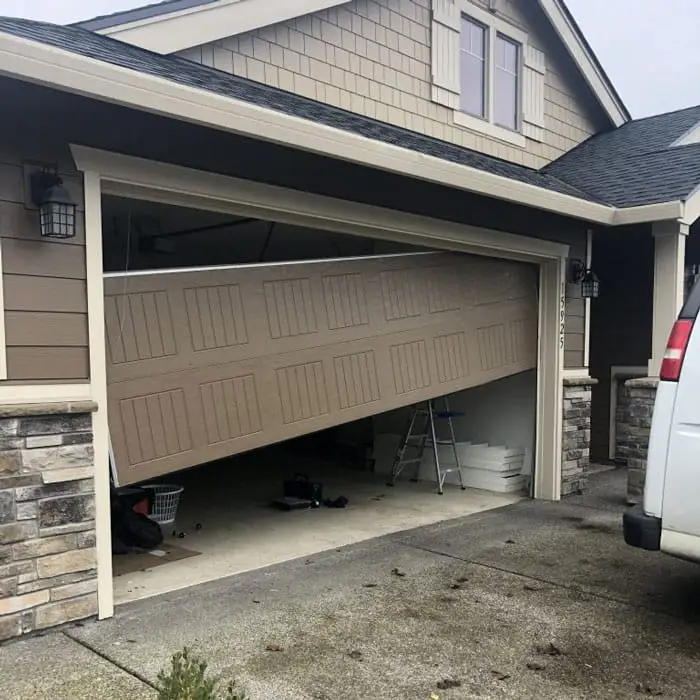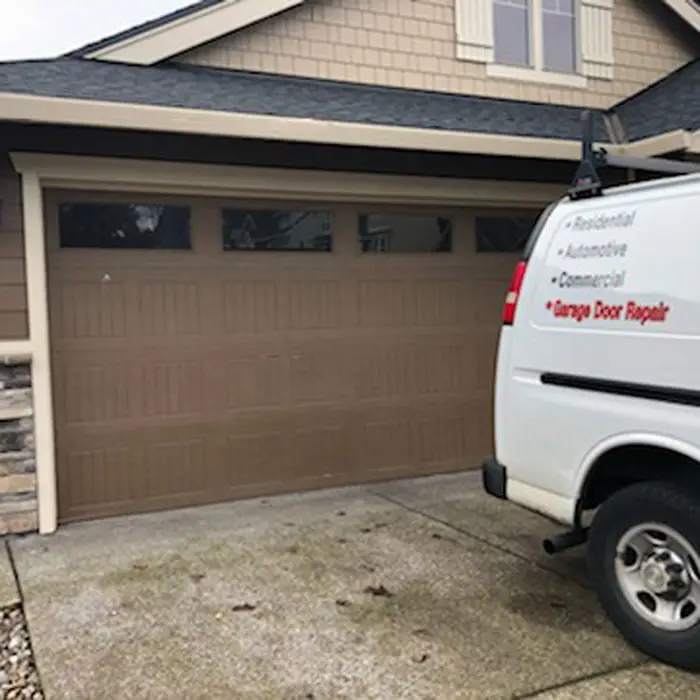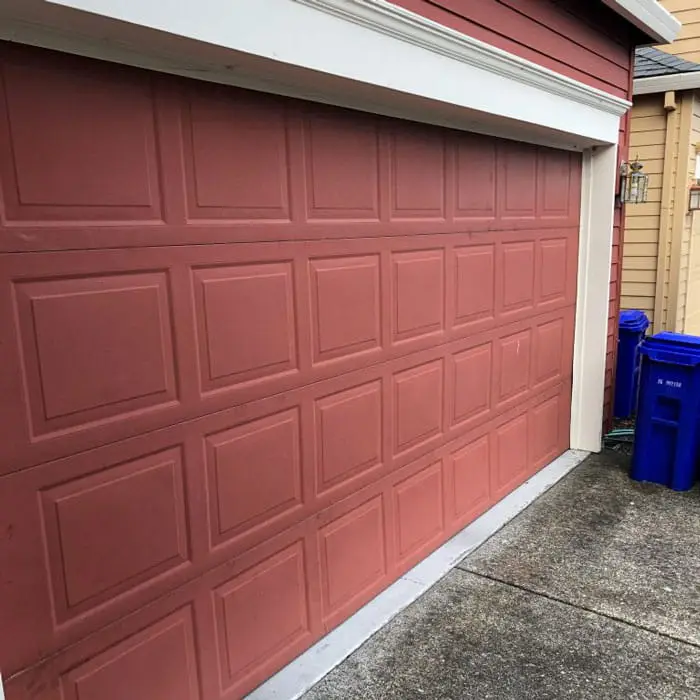Garage Door Parts and Common Problems (Part 1)
Your garage door is the largest point of entry into your home. Your garage door is also the largest mechanical moving piece in your home. Most people don’t do regular maintenance or servicing on their door, and only call a garage door technician when something needs repair. In this blog, we’ll go over the major parts of the garage door, and the common services it needs.
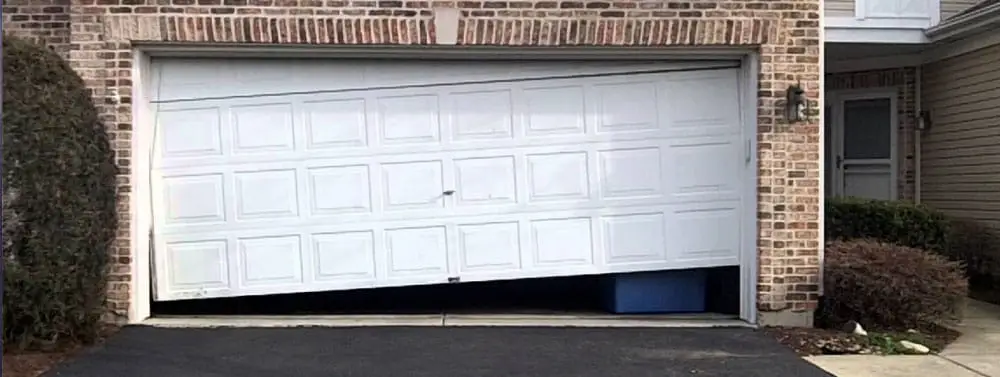
Door panels: your garage door is made up of panels. Garage door panels come in many different designs, and materials- aluminum, fiberglass, wood, etc. The most common issue people have with their garage door panels is a bump from a car. It happens. A little ding to your garage door panel is an eyesore. However, a larger ding will damage the overall integrity of your garage door. This results in the garage door looking uneven or like it’s sagging when the door is up.
Luckily if caught early fixing a garage door panel is an easy, and less expensive repair then replacing your whole garage door. However, if your door looks like it’s sagging when the door is open, or the panels are lopsided and uneven you’ll need to have your door repaired by a garage door technician as soon as possible. Delaying this repair will compound the problem, and eventually, make the repair more and more expensive.
Torsion Spring is a black tube above your garage door. The spring is secured to a metal shaft that has the drums on each end. When the door operates, the spring will wind or unwind and move the metal shaft. In conjunction with the drums and cables, it makes it easier for the door to be raised or lowered and creates a well-balanced system. Garage door springs are tightly wound. When a spring breaks, there can be a significant amount of damage or injury. Proper tension on a garage door spring is crucial to the health of your door. This is where a garage door tech and proper maintenance and servicing of your garage door can help.
A garage door technician will ensure the garage door is weighted correctly, by properly tightening the tension on the spring.
A broken spring will have an obvious gap like the one shown in the picture. If your spring looks like this, it’s time to call a garage door technician. A garage door will not be able to move up or down without this spring.
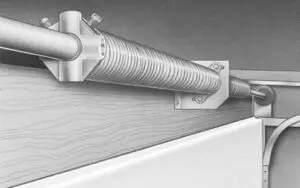
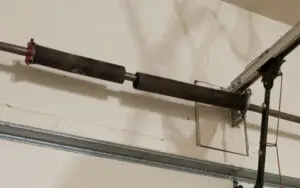
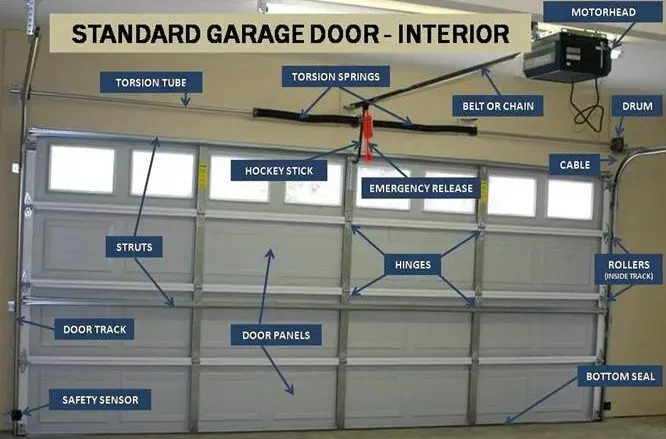
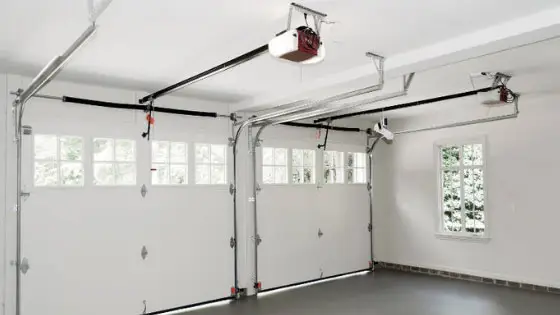
The Operator or motorhead is one of the most important parts of your garage door as it’s the mechanism that powers the door up and down. The operator is secured to the ceiling and holds the motor that drives the garage door. Signals are sent from your remote and/or wall opener to the operator and it sends the rest of the door’s components into action. The operator can be the most problematic part of your garage door- as there are several issues that can cause the operator to not work properly. If your operator is not working a garage door technician can diagnose any issues you may be having. We will list a few of the most common issues below.
The transmitter batteries are dead– This is obviously the easiest and cheapest solution to an operator not working. If you’re having issues with your transmitter, start by replacing the batteries on your remote.
Something is wrong with your transmitter- There could be a few issues that might be causing your transmitters not to work properly. The most common reason could be that you’re simply out of range of your garage door. Each garage door and transmitter combo has a specific range it will function in. If you’re trying to open your garage door before you can even see your house, then chances are you’re just too far away. Try waiting until you turn into your driveway to hit your transmitter button, and you should have more success opening your garage door on the first try.
The disconnect switch was enabled. If you can hear your garage door motor running for what seems like the full amount of time it normally would take to open or close the door, but the door doesn’t move, chances are the disconnect switch has been enabled. Every garage door opener comes with a disconnect switch in case you lose power. This allows you to open or close the door manually so your car isn’t stuck in the garage until the power comes back on.
These are examples of just a few of the issues your door may have. Ultimately there can be a miriad of problems you can experience with your garage door, especially if it’s an older model. Regular services can help maintain the life of your garage, and keep your home, and your family safe.
Next week our blog will continue with the parts of the garage door, and common problems that need to be addressed by a garage door technician. Stay tuned, and check back next week for the second blog in our series.
In the meantime, if you are experiencing any of the issues above, or other issues with your garage door, call us for a free consultation. Our experienced crew is standing by to help you with any locksmith and garage door issues you may have.

